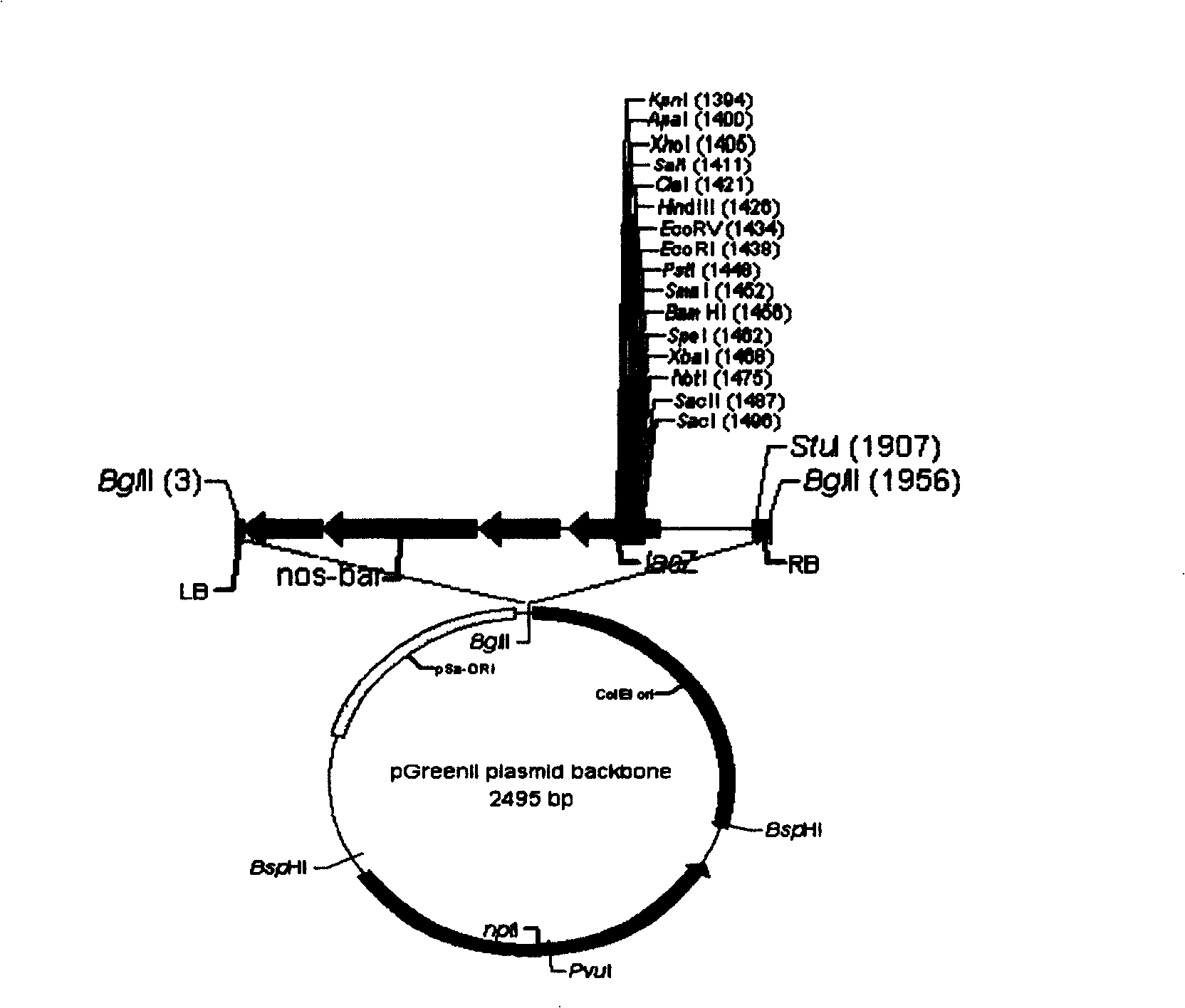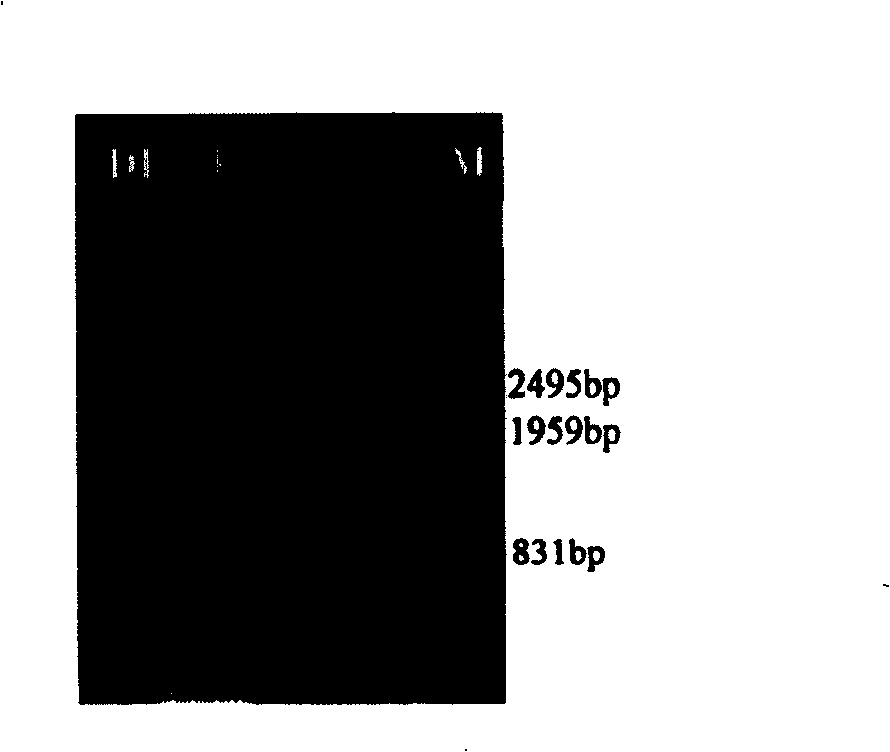Rape transgenic method
A technology of transgenic and rapeseed, applied in the field of bioengineering, can solve the problems of low conversion efficiency, small flux, low cost, etc.
- Summary
- Abstract
- Description
- Claims
- Application Information
AI Technical Summary
Problems solved by technology
Method used
Image
Examples
Embodiment 1
[0164] Example 1: Observation on the process of pollen tube elongation after pollination of Brassica napus variety "Zhongshuang Nine"
[0165] Brassica napus variety "Zhongshuang No. 9" (cultivated by the Institute of Oil Crops, Chinese Academy of Agricultural Sciences, also known as "Almighty 628"). This variety is a double-low (low erucic acid and low glucosinolate) high-quality rapeseed variety, resistant to viral diseases and sclerotinia, and is one of the main cultivated varieties in the Yangtze River Basin. Sow "Zhongshuang No. 9" in autumn (September 26-September 30), with a box width of 2 meters and a row spacing of 0.3 meters. According to normal cultivation management and fertilizer and water measures, it will bloom in the spring of the next year. After flowering, the ovary of "Zhongshuangjiu" after self-pollination was sampled every 1 hour to determine the microscopic observation of pollen tube elongation, so as to determine the best time for plasmid introduction. ...
Embodiment 2
[0186] Example 2: Extraction preparation and enzyme digestion identification of exogenous DNA plasmids
[0187] The exogenous DNA to be transformed is the plasmid pGreen0229 plant expression vector carrying the herbicide glufosinate resistance (bar gene) (the Escherichia coli strain DH5α carrying the plasmid pGreen0229 was donated by Liu Yuhui, Institute of Biotechnology, Chinese Academy of Agricultural Sciences). For the nucleotide sequence and restriction endonuclease map of plasmid pGreen0229, see the attached figure 1 with http: / / www.pgreen.ac.uk / jit / pG0229.htm .
[0188] (1), the extraction steps of exogenous DNA plasmid are as follows:
[0189] 1. Take 50 microliters of Escherichia coli DH5α strains with plasmid pGreen0229, insert them into a Erlenmeyer flask containing 500 milliliters of LB medium, and cultivate them on a constant temperature shaker at 37°C at a speed of 200 rpm. After 16 hours of incubation, the medium became cloudy.
[0190] 2. Extraction of plas...
Embodiment 3
[0270] Example 3: Transformation and seed setting rate analysis of Brassica napus variety "Zhongshuang Nine"
[0271] Sow "Zhongshuang No. 9" in autumn (September 26-September 30), with a box width of 2 meters and a row spacing of 0.3 meters. According to normal cultivation management and fertilizer and water measures, it will bloom in the spring of the next year.
[0272] In the blooming stage, choose sunny weather, choose unopened flower buds, leave 10 to 15 inflorescences, and manually emasculate before transformation. Knock off the small flower buds that are not emasculated at the top of the inflorescence, remove the siliques and flowers that have opened, and put a sulfuric acid paper bag of appropriate size. At the same time, another inflorescence is selected, the flowers that have been opened are knocked out, bagged, and pollen is prepared to provide newly opened flowers and stamens for pollination the next day. Hang a tag on the inflorescence shaft below the infloresc...
PUM
 Login to View More
Login to View More Abstract
Description
Claims
Application Information
 Login to View More
Login to View More - R&D Engineer
- R&D Manager
- IP Professional
- Industry Leading Data Capabilities
- Powerful AI technology
- Patent DNA Extraction
Browse by: Latest US Patents, China's latest patents, Technical Efficacy Thesaurus, Application Domain, Technology Topic, Popular Technical Reports.
© 2024 PatSnap. All rights reserved.Legal|Privacy policy|Modern Slavery Act Transparency Statement|Sitemap|About US| Contact US: help@patsnap.com










